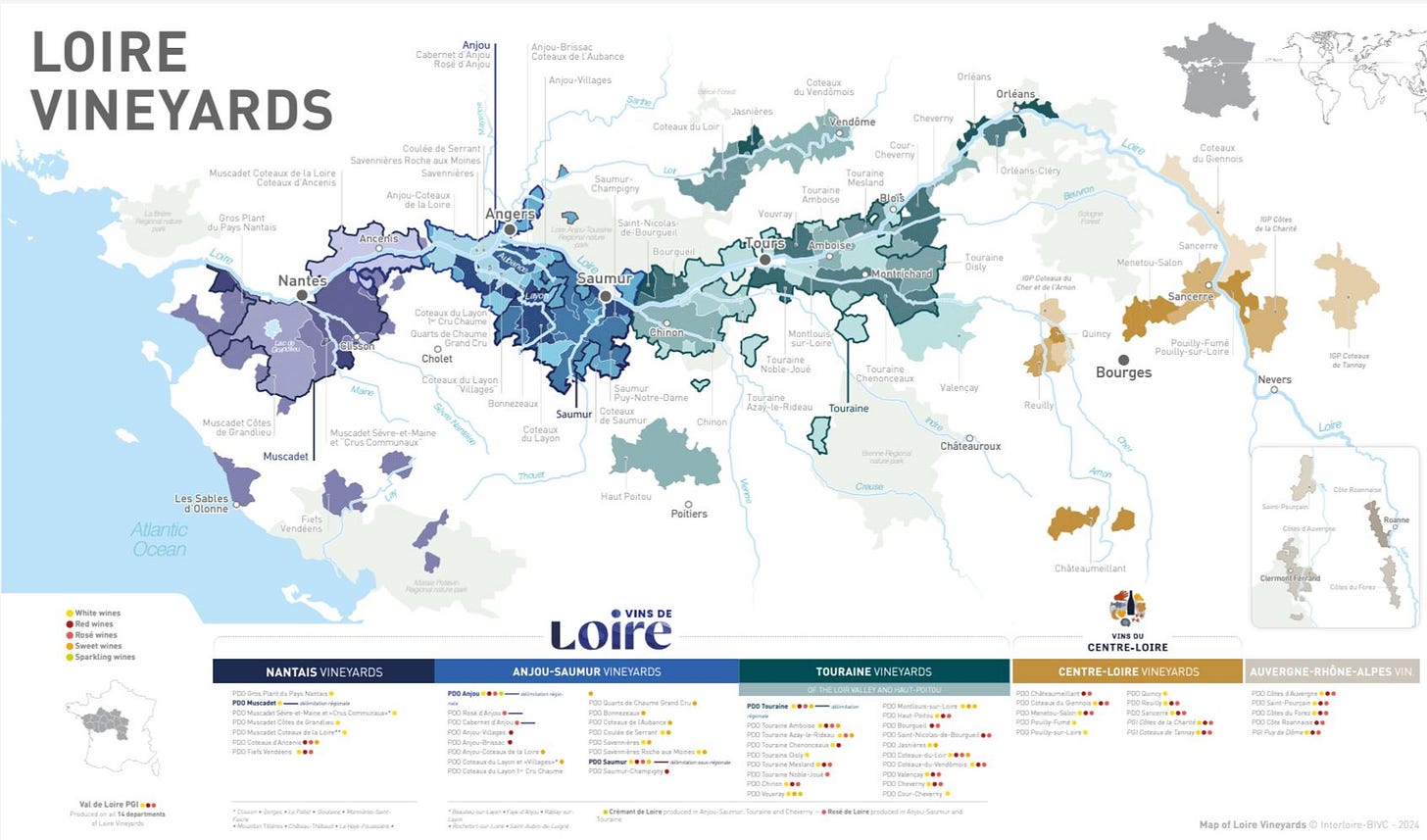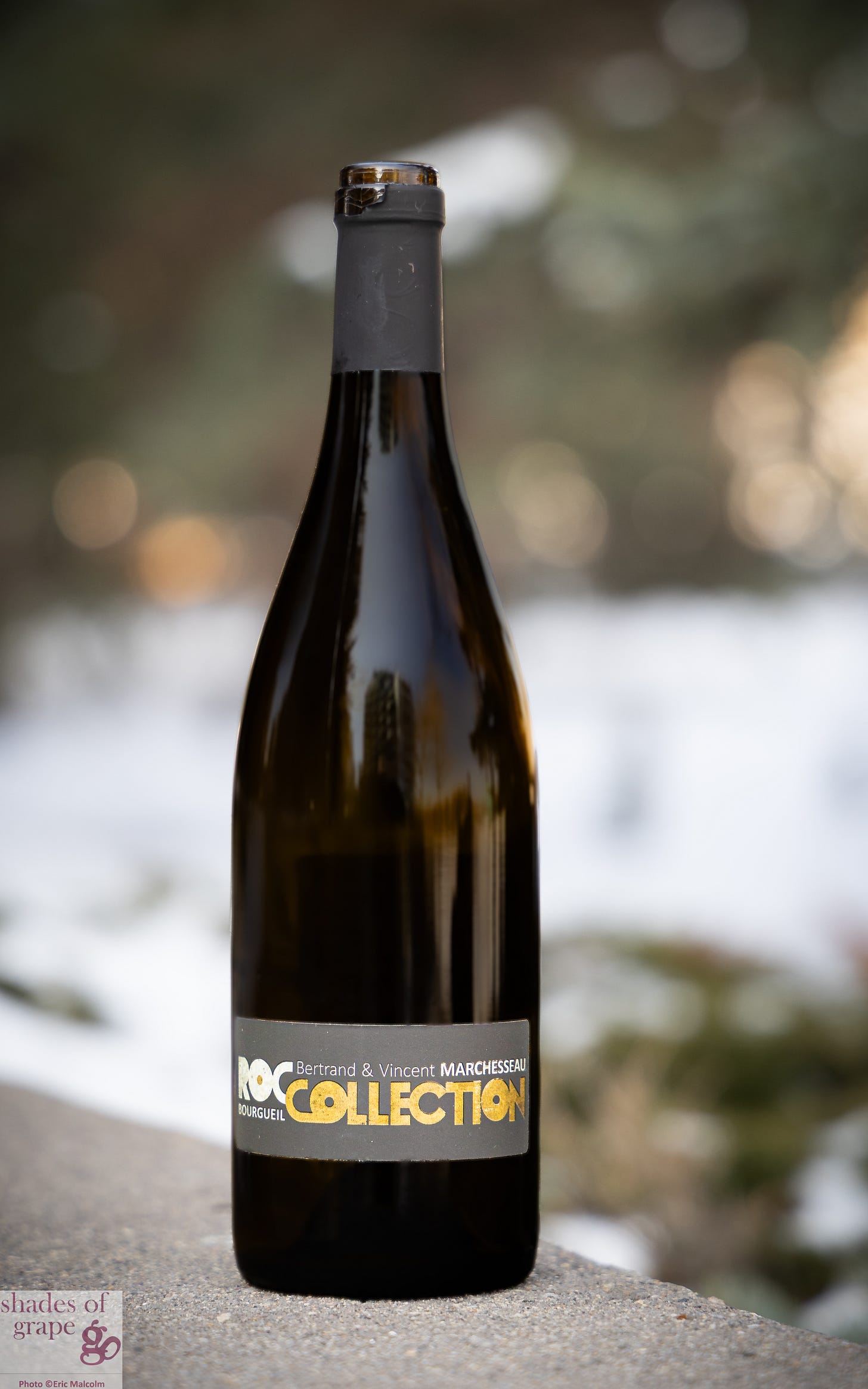Same Grape, Two Personalities—Cab Franc Edition
- two cab franc walk into a wine shop…
I love helping people discover the wines they love—if you're in Alberta, let's connect!
Thanks to all the paid subscribers for their support! This funding helps cover the costs involved in creating these weekly articles!
Appreciate my wine recommendations? Enjoy my personal wine curation service? Consider upgrading to a paid subscription! Help me continue sharing the world of wine with you.
What happened in your wine world recently?
Last weekend my cousin and her husband visited. They are also wine fans.
Genetic maybe?
We popped by Cork so they could see the shop, and we landed in the French section. Cabernet Franc came up in conversation! Interestingly Cork had just brought in two new Cabernet Franc wines that I didn’t know.
My visitors wanted to buy them for dinner. Apprehension set in as I like to recommend wines I have tried before. They insisted and sold me on the concept that we would all share the same new adventure together.
One Cabernet Franc came from the Bordeaux sub-region of Montagne-Saint-Émilion and the other from the Bourgueil sub-region in Loire.


It was a blast drinking them side by side as they were such different wines, showing how much terroir comes into play in wine.
The Bordeaux was rather tight.
Definition please!
Tight means that the flavors and aromas are not very expressive. It is not that they are not there or that there is no intensity (think volume), but rather that they are hiding.
So why are you talking about this wine? Sounds like a shy dud to me.
This is one of the roles of decanting. The oxygen helps the wine to relax and come out to play! The other factor is that Bordeaux wines tend to be very tannic.
Meaning they are high in tannins, the element in wine that has a drying effect in the mouth?
Exactly, decanting also allows the tannins to soften and allows them to be less dominant and more in balance with the rest of the wine. In this case we each got a little pour to return to as we explored the other Cab Franc.
The Bourgueil was ready to drink as is and was delicious! The two wines were fun to have side by side as we enjoyed the Bourgueil as we witnessed the Bordeaux open up gradually and refilling our glasses accordingly.
Can you share a little about Cabernet Franc?
Cabernet Franc, along with Sauvignon Blanc is a parent of the famous Cabernet Sauvignon, the most widely grown black grape in the world. Cabernet Franc may not be as famous as its offspring, but it is still in the top 20 most planted grapes globally.
It is fairly finicky to grow, which means it is not grown extensively throughout the world. It likes cooler climates, which is why Bourgueil and Saint-Émilion regions are great homes for it. Other places to look for it are in Italy’s Bolgheri and the Okanagan Valley & Niagara Peninsula in Canada.
I am still processing how the wines could be so different seeing as they are made from the same grape!
Agreed – it is so cool, and one of the things that can make wine so fun to explore! In one word: terroir. (Check out the link where I define it in the context of the Burgundy region.)
Perhaps the another way to explain is to talk about Bordeaux, which can make a full range of styles of wine from simple and inexpensive to some of the most complex, age worthy, and hence expensive wines in the world. Part of it is that Bordeaux is a huge region so there will be a huge amount of difference in the soils, the climate, and producer styles.
Some of the most expensive Bordeaux wines are on the Bordeaux Right Bank in Pomerol. According to WSET (Wine & Spirits Education Trust), the best wine on the right bank is on the limestone plateau or gravel near Pomerol.
The Bordeaux featured wine: Château Tour Bayard has soil rich in clay and limestone. It comes from Montagne-Saint-Émilion sub-region, which is considered a Saint-Émilion satellite and is extremely close to Pomerol.
In general Bordeaux also has a great balance of warmth, rainfall, and dry autumns to allow for steady and complete ripening, providing an excellent balance of tannins, acidity, and intensity to allow for ageing.
But you loved the Loire wine more.
I didn’t say that. I said the Loire wine, Bertrand & Vincent Marchesseau Roc Collection, was delicious and ready right out of the bottle!
It is simply a very different wine than the Bordeaux Cab Franc. It is like two children who you love for different reasons and that you must treat differently because they have different temperaments!
Enjoying my recommendations? Consider upgrading to a paid subscription.
Château Tour Bayard Cabernet Franc 2019 from Montagne-St-Émilion, Bordeaux, France
Style: Full body old world red wine
Varieties: 100% Cabernet Franc
This floral and complex wine has notes of lavender, ripe red cherry, raspberry, dried strawberry, thyme, and green pepper. It has the additional complexity of cloves, vanilla, cedar, milk chocolate, newly fallen leaves, leather, tobacco, animal, and funk completed by a long finish. This wine has high fine-grained tannins that soften with decantation.
Best pairings: Beef or lamb kebabs with green pepper, Rosemary crusted grilled lamb chops, Herbed lamb stuffed green peppers, Ratatouille, Sautéed fennel sausage, Cheese: Gruyère, Oka, & Goat Cheese
Serving Temperature: 17-19 degrees Celsius
Serving Tips: Decant minimum 1 hour. This wine is fun to see evolve. It is super complex.
Bertrand & Vincent Marchesseau Roc Collection Cabernet Franc 2018 from Bourgueil, Touraine, Loire Valley, France
Style: Moderately full body old world red wine
Varieties: 100% Cabernet Franc
This complex perfumed wine has notes of violet, just ripe red cherry, strawberry and raspberry, bright red fruit compote, kirsch, thyme. It has the additional complexity of sanguine, graphite, funk, leather, clove, tobacco with a long finish. The high quality tannins are moderately high and slightly grainy.
Best pairings: Roasted pork tenderloin with herbs, Rosemary crusted grilled lamb chops, Eggplant parmesan, Portobello mushrooms stuffed with herbs and goat cheese, Dry sausage, Cheese: Comté, Morbier, Aged goat cheese
Serving Temperature: 17-19 degrees Celsius
Serving Tips: Ready to drink! Pour and enjoy!
If you're in Alberta and want a one-on-one wine curation experience, please reach out!
A huge thank you to my paid subscribers—your support helps cover the costs of creating these weekly articles.
Love my wine recommendations? Enjoy my personal wine curation service? If you find value in my writing, consider upgrading to a paid subscription to help me keep sharing the world of wine with you!
I have compiled all my wine recommendations in one place. I will do my best to keep this up to date. I also include the link(s) to the article in which the wine was featured.
Like what you are reading? Click on the ❤ to let me know it resonated with you!
SOURCES:
Achat de Vins. (n.d.). https://marchesseau.plugwine.com/vins
Château Tour Bayard - Montagne-Saint-émilion. Montagne. (2023, February 22). https://www.montagnesaintemilion.com/chateaux/tour-bayard/
Harding, J. and Robinson, J. (2023) The oxford companion to wine. Oxford, United Kingdom: Oxford University Press.
Libournais wines: AOCS Saint-émilion, Pomerol and more. Site Officiel Bordeaux.com. (2019, September 9). https://www.bordeaux.com/gb/Our-Terroir/The-Libournais
MacNeil, K. (2022) The wine bible. New York, NY: Workman Publishing.
Vinsdeloire. (n.d.). https://www.vinsdeloire.fr/sites/interloire/files/2024-10/gs-gi-0203-carte-pro-sept-2024-english-v2.pdf
Wine & Spirit Education Trust (2021) D3: Wines of the World - An accompaniment to the WSET Level 4 Diploma in Wines. Version 1.2. London: Wine & Spirit Education Trust.







Love a good family and dinner party story! Plus we get great insight! xx
Cab Franc is such a giving grape, and made well, shows an emotional generosity greater than any other wine.